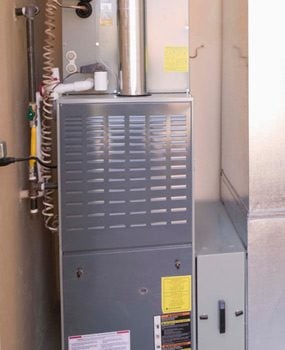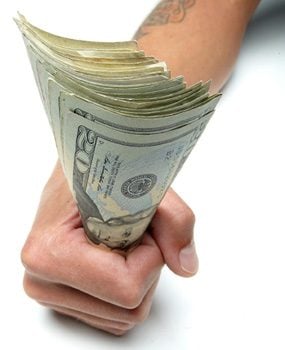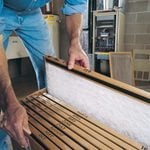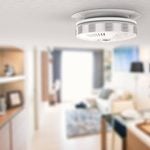New Furnace Cost Considerations You Need to Know
Updated: Feb. 10, 2023Our experts will give you advice to help you decide when you need to replace your furnace as well as how much does a new furnace cost.
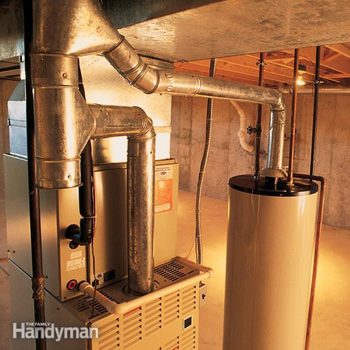
Before you sit down with an HVAC contractor to talk about your furnace, read up on what our pros and field editors think you need to know.
Image Provided by Comstock
Don’t get burned by a bad house furnace
New furnaces are more complex than ever with lots of new features, higher efficiencies and higher costs. Knowing what to ask an HVAC contractor is key to buying the right furnace for your home and getting a quality installation.
We asked experienced TFH Field Editors—HVAC pros who do this for a living as well as fellow DIYers who have recently bought a house furnace—for their top tips, warnings, lessons learned, gas furnace prices and best advice about buying a new forced-air furnace.
Here are simple furnace fixes you can do yourself. If you’re looking for the best furnace to purchase, energy efficient brands might be the best bet.
Mid or High Efficiency Furnace Cost
How much is a furnace?
Average Furnace Cost for Mid-Efficiency Furnace
Cost: $1,500 to $2,500 installed (no A/C) AFUE: 80 to 89 percent.
Savings: 15 to 20 percent of current heating costs (when replacing a 65 percent efficient unit).
Venting: Into a masonry or metal chimney (existing chimney might require upgrading).
Average Furnace Cost for High-Efficiency Furnace
Cost: $3,000 to $5,000 installed (no A/C) AFUE: 90 to 97 percent.
Savings: 25 to 30 percent of current heating costs (when replacing a 65 percent efficient unit).
Venting: Directly through a wall to the outside through plastic PVC pipe. Known as “condensing units” because they recover extra heat from combustion gases by extracting water from them.
Highest efficiencies make sense when…
- You live in a cold climate (may be required by law—see below).
- You will be staying in your house for 10 years or more.
- Local energy costs are high.
- You’re replacing an inefficient heating system.
- The contractor markup is low (see “Top Tips from an HVAC Pro” above).
- You can take advantage of local, state and utility rebates and incentives. Federal tax credits on high-efficiency furnaces were not renewed for 2012. But state, local and utility rebates may still be available in many areas. Visit dsireusa.org for more information.
- The payback calculation is reasonable. Visit yourmoneypage.com/ energy/furnace1.php to run a payback calculation.
Single Stage or Two Stage Furnace Cost
Single-stage
A traditional single-stage furnace runs the burner at full blast and shuts off until heat is called for. It costs $500 less than a two-stage furnace, but the trade-off is lower energy efficiency, hot and cold spots, and inconsistent temperatures.
Two-stage
A two-stage furnace has a high and a low burner setting. It normally runs on low unless full blast is needed. It costs $500 more than a single-stage unit, but it delivers consistent heat, which means fewer drafts and temperature swings, and is quiet and energy efficient.
Follow these tips and you can actually keep your furnace going for twice as long!
Two-speed or a variable-speed blower?
Standard two-speed
A standard two-speed blower (aka “multi” speed) with a PSC motor has one blower speed for heating and one for cooling. It’s $600 cheaper than a variable-speed blower and is less complex, which means lower future repair costs. But it’s noisier than a variable-speed blower and uses more electricity.
Variable-speed
A variable-speed blower uses an ECM motor, which runs on DC power and continually adjusts its speed to your home’s needs. It uses a fraction of the electricity of most standard motors and is quiet and comfortable. It costs $600 more than a standard blower and is a more complex system, which potentially means more expensive repairs.
Furnace Cost Tips from an HVAC Pro
- Don’t go with the lowest bidder
“Service calls are twice as likely to be related to poor installation as to defective equipment. The guy with the lowest bid often makes the biggest mistakes.” - Contractor markup makes a difference
“The heating contractor actually pays about $300 to $500 more for a 95 percent house furnace than he does for a 90 percent furnace. So, if that added cost is passed through with little markup, you might be able to cost-justify it. If the contractor marks up the price a whole bunch, then you have no chance of making a payback in your lifetime.” - Have a pro install a new thermostat
“Furnaces and thermostats, just like cars, have gotten increasingly computerized, and they can require some pretty serious know-how to get them to work right.” - High vs. very high efficiencies
“Higher efficiency means higher complexity, and I like to keep the machinery as simple as possible. The more complex it is, the more expensive it is, and the more it will cost to fix when it breaks. Generally, your very best value is to get a 92 percent efficiency furnace with one of the new ECM fan motors.” - Get a proposal, not a bid
“Go with someone who provides a detailed written proposal that outlines exactly what he will and won’t do. He should list the manufacturer and model number of the proposed equipment as well as the cost of any plumbing, venting changes or electrical work required.” - Buy a reputable brand
“Stick with the major brands or one of their subsidiaries. If you don’t recognize the brand, don’t trust what the contractor says about it. Do your own checking online before you buy.” - You may need a smaller house furnace
“Older furnaces were usually oversized so that the house was always warm enough. But new higher efficiency furnaces can have a lower Btu rating and still put out the same amount of heat. For example, a new 94 percent efficient furnace that is rated at 80,000 Btu puts out as much heat as an old 75 percent efficient 100,000 Btu furnace.”
New Law May Affect Your Choice
Beginning in May 2013, a new U.S. Department of Energy rule requires newly installed residential gas furnaces in 30 northern states to be rated at least 90 percent AFUE (annual fuel utilization efficiency). That means your new house furnace will vent directly through the wall instead of up your chimney or stack. Check with a local HVAC professional for more information or visit appliance-standards.org/product/furnaces.
Assess Your Entire HVAC System
When you’re shopping for a furnace, get your ducts checked at the same time. There’s no sense in getting a new furnace if you’ll let the hot/cold out through leaks or poor insulation in your ductwork.
Thomas Czerwinski
Furnace Cost Tips from FHM Fans
We’ve gained loads of insight over the years from many of our seasoned readers. Here are their best furnace cost saving tips.
Highest efficiencies have higher repair bills
Consider buying through a home center
Steve’s next project is a display case for the large wood sailing ship models he builds.
Use an experienced pro
Bruce just finished remodeling his den from the studs up.
Incentives can slash the price
Tom just wrapped up a half-bath remodel (taking the room down to the studs and the subfloor and adding new windows, doors, vanity, sink, toilet, etc.).
Don’t assume the contractor knows everything
Tom has taken on HVAC as a hobby and has reduced his utility costs by 25 to 30 percent by sealing ductwork and replacing his own furnace, thermostat and other HVAC equipment.
Put details in writing
Jeff’s recent projects include installing flooring and cabinets in his children’s home schooling classroom.
Know the true cost of the furnace
David is currently building a dock for his pond. Plus, these are the best furnace filters to buy.
